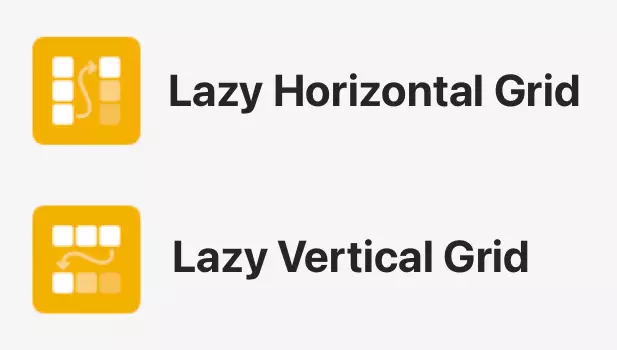LazyHGrid and LazyVGrid: Everything You Need to Know
 thevenkat
thevenkat
Introduction:
LazyHGrid and LazyVGrid are components in SwiftUI that allow you to create grid layouts efficiently. They are "lazy" because they only render the views that are currently visible on the screen, which helps improve performance, especially with large data sets.
LazyHGrid:
LazyHGrid arranges its child views in a horizontal grid. It allows for scrolling horizontally.
It's useful when you want to display items in a horizontal layout, such as a photo gallery or a list of items that can be scrolled side to side.

LazyVGrid:
LazyVGrid arranges its child views in a vertical grid. It allows for scrolling vertically.
It's ideal for displaying items in a vertical layout, such as a collection of cards, product listings, or any other set of items that should be viewed in a grid format.

Key Features
Performance: Since they are lazy, they only load and render views that are visible on the screen, which saves memory and processing time.
Customizable: You can define the number of columns/rows and their sizes using
GridItemparameters (e.g.,.flexible(),.fixed(),.adaptive()).Scrollability: You can wrap
LazyHGridorLazyVGridin aScrollViewto make the grid scrollable.
Subscribe to my newsletter
Read articles from thevenkat directly inside your inbox. Subscribe to the newsletter, and don't miss out.
Written by

thevenkat
thevenkat
I am a Senior iOS Developer, crafting Native iOS applications using Swift. My passion lies in creating innovative solutions that enhance user experience and drive customer satisfaction. I excel in problem-solving, code optimization, and staying updated with the latest trends and technologies in the iOS ecosystem. I thrive in collaborative environments and am always eager to share knowledge and learn from others.